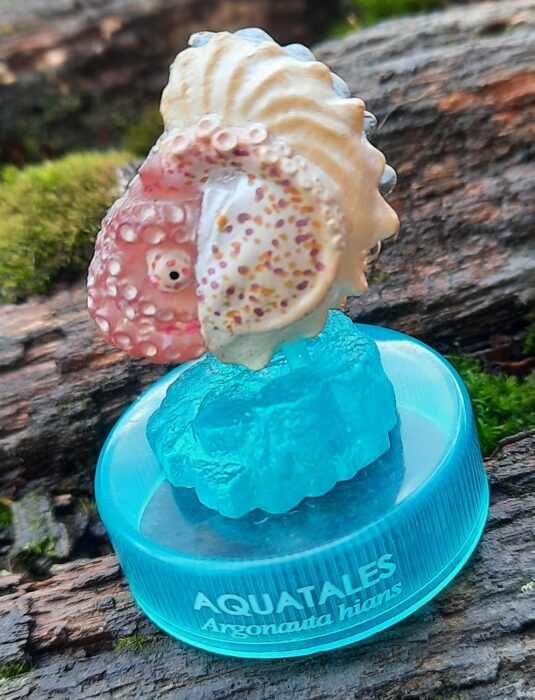Of the various classes of animals, Cephalopoda is among the smartest and most intriguing, the tentacled forms having taken many forms over the millennia. Often there are shelled forms, like the ammonites and Nautiloids. Another, coming from the same groups as octopus, are Argonauts, or paper nautiluses, as the shelled females have very brittle shells, where as the males lack shells.
Author: Sirenia
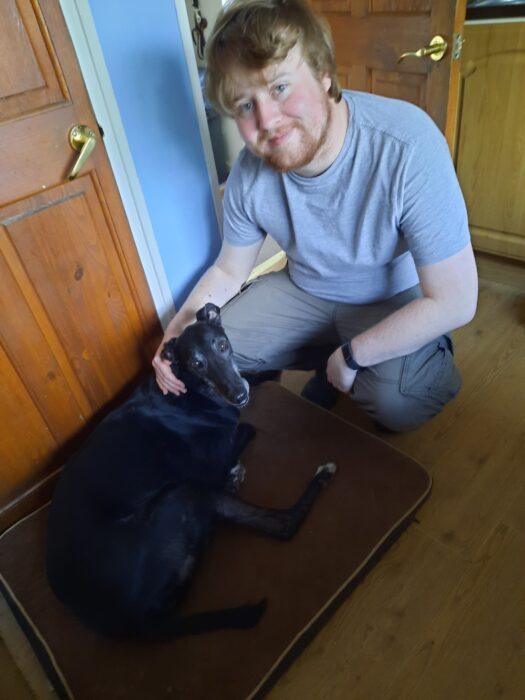 I'm Daniel Waite (aka ‘Sirenia’ on the Animal Toy Blog/Forum and ‘Indohyus’ on the Dinosaur Toy Blog/Forum). Ever since I was young, I would love any chance to see animals. Whether it’s visiting Safari parks, zoos, farms or local parks, I would love seeing animals around, doing what they did. Though I skewed towards ancient species later on, I still kept my love for extant species alive. I’ve had many pets, including dogs (my greyhound River is in the photo), cats, ferrets, mice and goldfish. I liked collecting many animal figures over the years, often from my trips to zoos and safari parks, resulting in a vast menagerie of models. As a result, my reviews can come with a heavy feeling of nostalgia. Hope you enjoy!
I'm Daniel Waite (aka ‘Sirenia’ on the Animal Toy Blog/Forum and ‘Indohyus’ on the Dinosaur Toy Blog/Forum). Ever since I was young, I would love any chance to see animals. Whether it’s visiting Safari parks, zoos, farms or local parks, I would love seeing animals around, doing what they did. Though I skewed towards ancient species later on, I still kept my love for extant species alive. I’ve had many pets, including dogs (my greyhound River is in the photo), cats, ferrets, mice and goldfish. I liked collecting many animal figures over the years, often from my trips to zoos and safari parks, resulting in a vast menagerie of models. As a result, my reviews can come with a heavy feeling of nostalgia. Hope you enjoy!All reviews by this author
Choiseul Crested Pigeon (Yowies Forgotten Friends Series A by Cadbury)
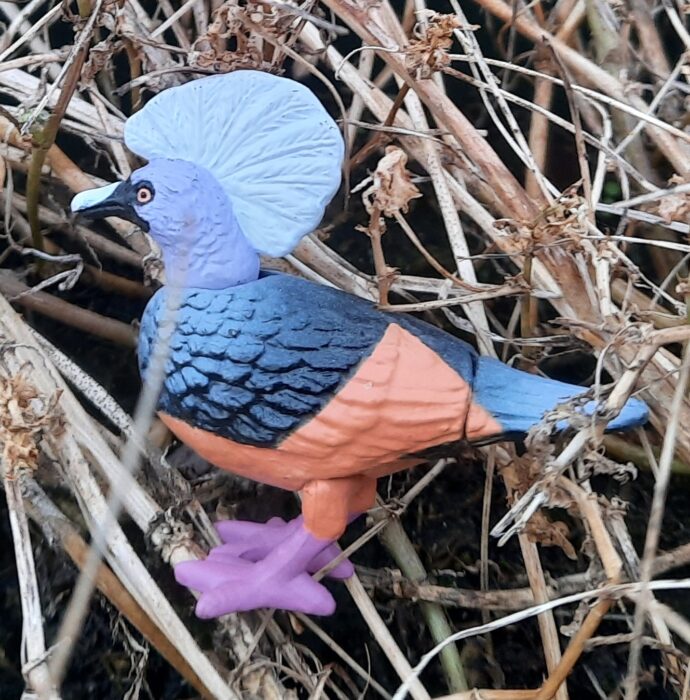
The age of Imperialism truly wrecked the ecosystems of the world. Of all of these, island ecosystems were the most at risk, as the animals there were often unique and unable to deal with humanity and the creatures that often accompanied them. The island of Choiseul in the Solomon islands is one such example, as it was once home to the spectacular Choiseul Crested Pigeon, a relative of doves that was endemic only to Choiseul.
Australian Magpie (Yowies Series 2 by Cadbury)
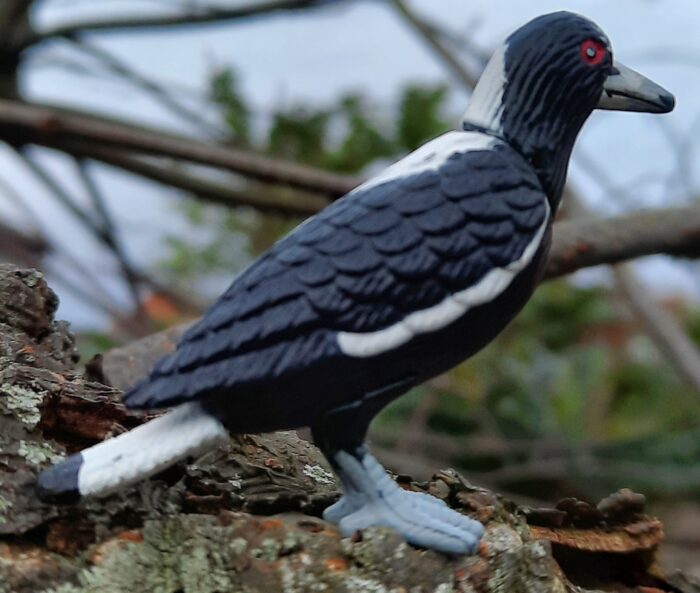
The evolution of life is a curious thing. You never know what is going to become a forgotten twig on the tree of life and what will be the start of large branches. When fossils of dinosaurs were found, I imagine most were sad that no relatives exist today. However, it turns out one group did, and they are all around us today: birds.
Masked Lapwing (Yowies Series 3 by Cadbury)
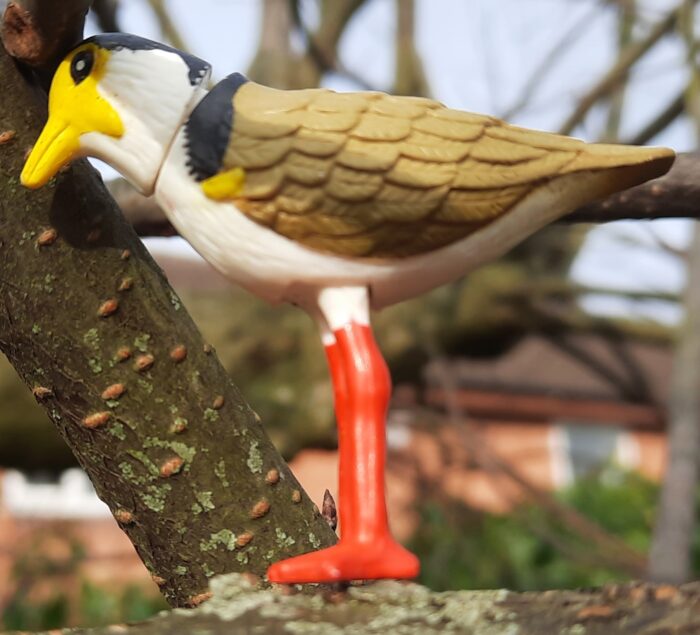
The wetlands of the world are great places to witness a variety of life. Birds are common here, wading and collecting food among the silt and water. This review will look at one from the southern hemisphere, the Masked Lapwing (Vanellus miles), a common animal in New Zealand and Australia, adaptable and able to live in open fields, wetlands and even arid environments.
Giant Tube Worm (MIU Deep Sea Odyssey 2 by Kaiyodo)
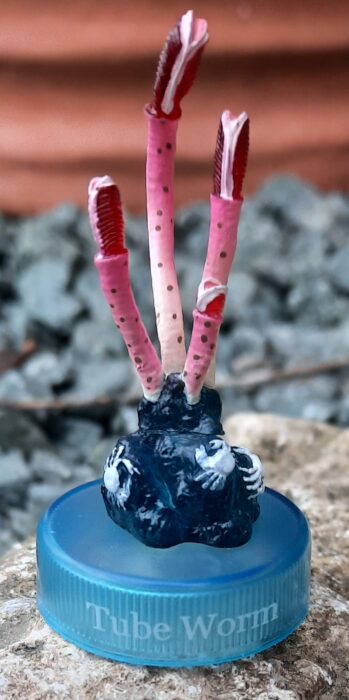
“Life will find a way.” These words, spoken in the Jurassic Park franchise, are so poetic and beautiful in their simplicity. They are also very true, as, no matter where you are in the world, there is liable to be life, even in the most inhospitable locations. Thermal vents in the pelagic zone seems a bad spot to live in, yet life has found a way to live in this harsh environment and reap the benefits, such as this review’s subject, the Giant Tube worm (Riftia pachyptila), an annelid that lives by these vents, harvesting the minerals they spew out.
Chimpanzee, pair (Noah’s Pals by Caboodle! Toys LLC)
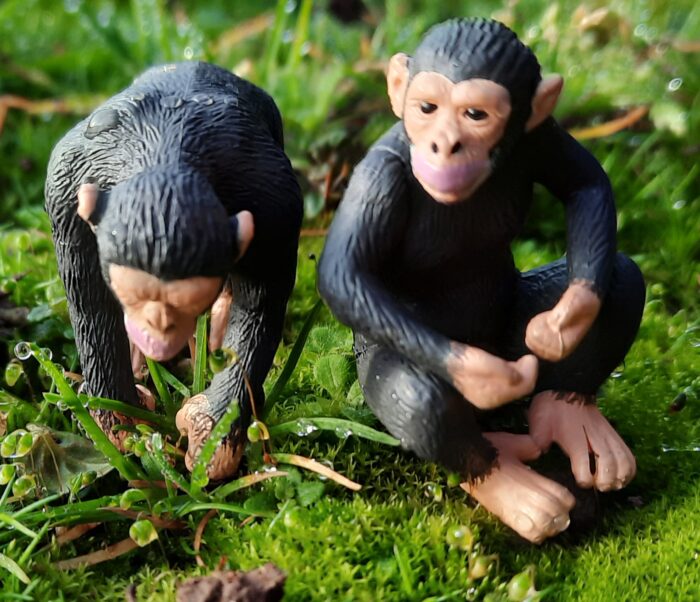
Humans, despite our technology and power, are still just another mammal. Specifically, we are primates, related to many of the ape family. Of all of them, we are most closely related to the Chimpanzee (Pan troglodytes), found in Eastern Africa, they are known for intelligence, tool use and (at least in the UK) adverts for tea.
Capybara, adult and babies (Wildlife by CollectA)
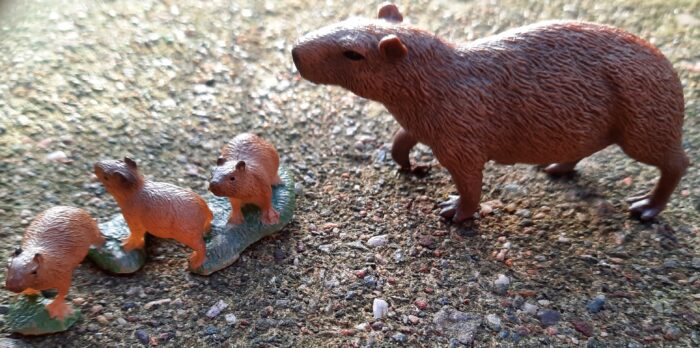
When most think of rodents, they think of things like the infamous black rat and it’s fleas, the verminous plague bringers of the world. This is unfair on all fronts, including the idea of them being small, as some can get sizeable. The largest today is the capybara (Hydrochoerus hydrochaeris), a relative of the Guinea pig and likewise found in South America, quite commonly too.
Snow Leopard, pair (Noah’s Pals by Caboodle! Toys LLC)
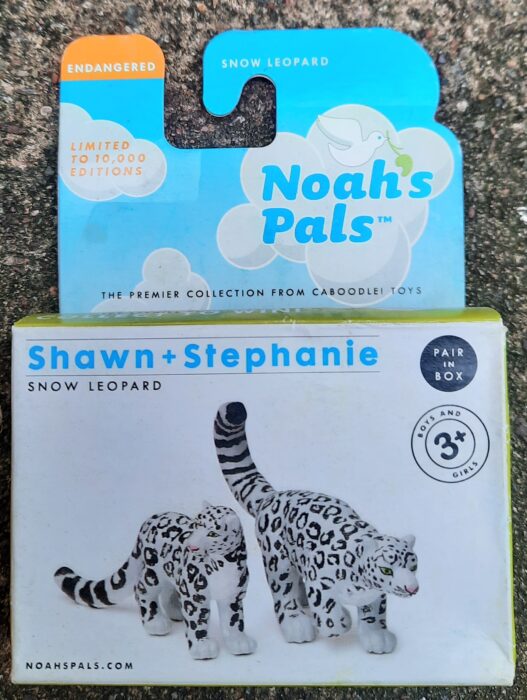
Happy holidays to all, and welcome to this year’s first “Winter Wonderland”! At the moment though, it is also the last, as I kinda used up all I had for it last year. But, something is better than nothing, so here is a creature of the frozen heights of the Himalayas, the Snow Leopard (Panthera uncia).
Marabou Stork, Pair (Noah’s Pals by Caboodle! Toys LLC)
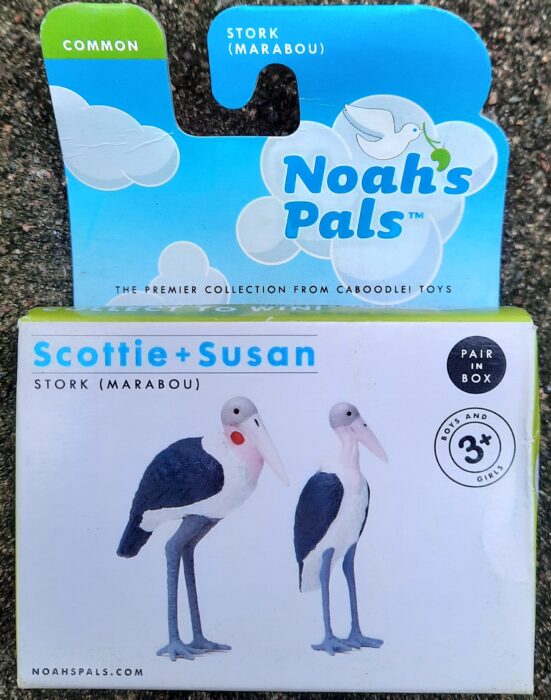
When a toyline picks it’s species, it is best to be as diverse as possible. Sure you can go for the same old lions and tigers and bears (oh my!), but people, especially collectors, will often grab things that are rarely done or look interesting. Noah’s pals has been a good example of this.
Magpie Goose (Yowies Series 4 by Cadbury)
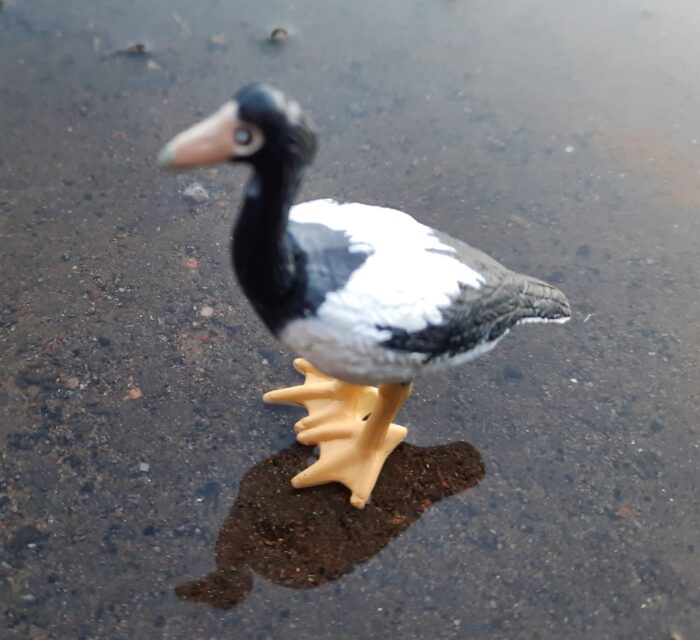
Some may read the title and think “what is that?! A freak of nature? Science creating some hideous hybrid?!!?!?” The answer is more interesting: the Magpie goose (Anseranas semipalmata) is the last of a family of waterfowl, the Anseranatidae, which is a living fossil from the KPg boundary.
Grey Fantail (Yowies Series 2 by Cadbury)
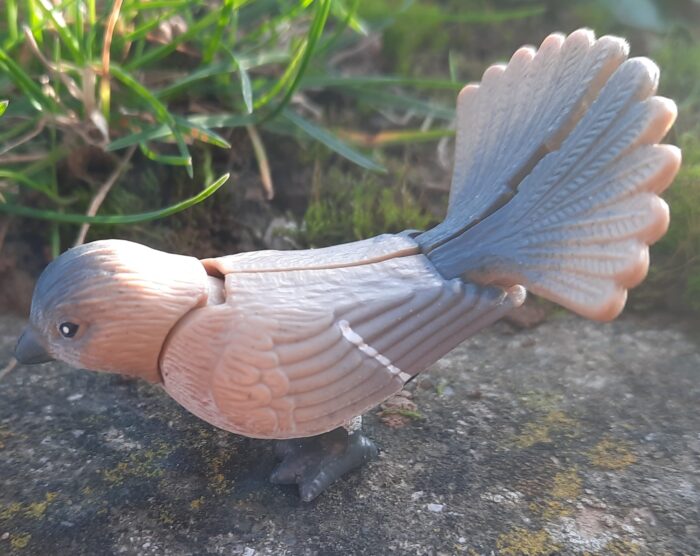
The pygostyle is an amazing evolutionary adaptation. The fusion of several vertebrae allows for some amazing tail fans, allowing birds to perform incredible displays in mating displays. One group that exemplifies this are fantails, named for their large tail feathers, allowing the males to display elegantly to females. One such example is the Grey fantail (Rhipidura albiscapa), a small insectivore from Australia, along with the Solomon islands, New Caledonia and Vanuatu.
Giant Moa (Yowies Lost Kingdoms Series A by Cadbury)
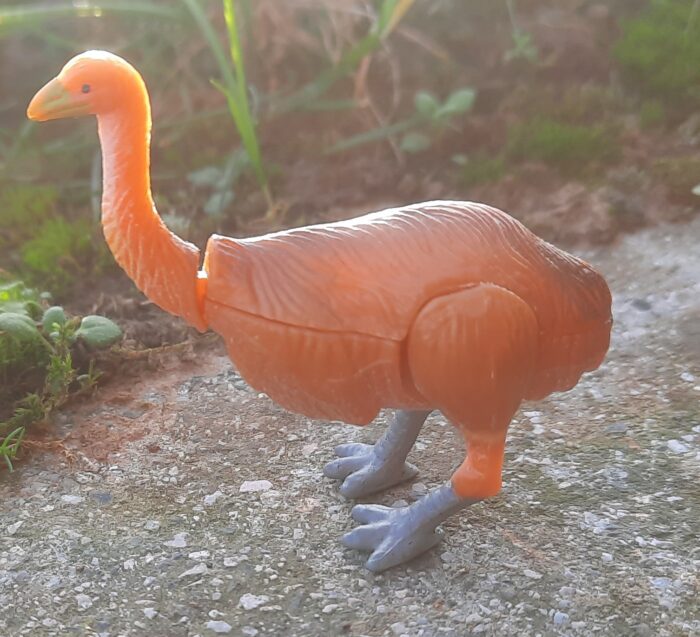
The largest bird today is the Ostrich, and this is owing to it’s flightlessness. The recent past, however, provided greater flightless giants. One such came from New Zealand, in the form of the South island Giant Moa, Diornis robustus, with females able to reach up to 11ft 10″ if they stretched up, being 6ft 6″ on a horizontal plane.

